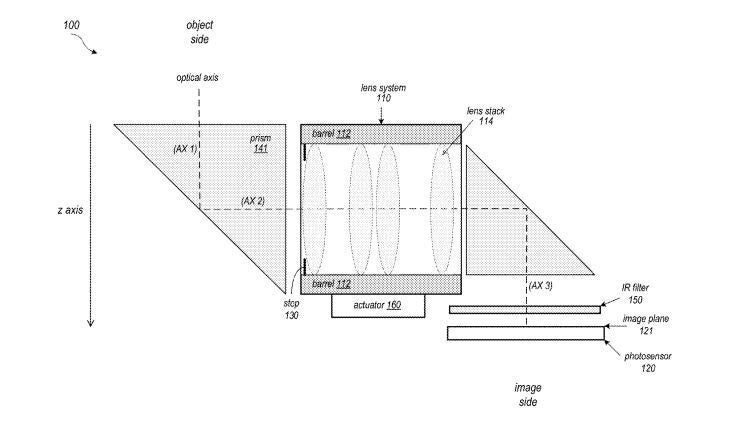The iPhone’s camera is one of its strongest points; however, the zoom on iPhones was always performing less well than other competitors. Now, a patent that was filed confirms that Apple may be working on bettering the zoom on future iPhones by adding a folded periscope zoom lens, reports MySmartPrice.
Is folded periscope zoom lens coming to future iPhones?
Back in July, Cupertino was found to be working on something called ‘Folding Camera’, a patent that was approved back in the summer and it showed an advanced folded periscope zoom lens system that will allow iPhones to have better optical zoom capabilities. The patent showed two prisms and a lens system that is quite similar to what some smartphones already have (periscope lens). Last month, there were reports that Apple has partnered with LG Innotek to develop and produce the new camera system. The two companies would also continue developing Liquid Lens technology.
However, this technology is under dispute due to a claim by Samsung. Currently, Xiaomi is the only company that used Liquid Lens. The Liquid Lens technology is basically a motor that precisely manipulates a packet of fluid to switch between Telephoto mode and Macro Mode. The China-based company may go ahead and license this tech for LG Innotek or Corning.
Despite that though, Cupertino has not given up on trying to build a better zoom system for future iPhones. The company has now published a continuation patent with twenty new claims to the aforementioned folded periscope zoom lens patent. The new claims give more details on how such a lens system may work and how it may improve the zoom capabilities of iPhones.

Illustration from the patent
The new continuation patent is published with the US Patent and Trademark Office and is related to three other patents, published in 2018 and 2019. It includes twenty claims giving more details and explaining a bit more about the folded periscope zoom lens.
The folded camera, described in the patent, will have two light folding elements and an independent lens system. This lens system has five refractive lens elements in it.
A periscope lens can allow the phone to zoom in more and produce a higher-quality zoomed-in photo
Periscope lenses for zoom capabilities are already present in a number of Apple competitors. Generally, the technology uses a prism or mirror that refracts light onto the lens sensor and can therefore be used for magnification purposes. One difference here is that the mechanics of the lens are built into the inside of the smartphone, instead of the outside like a traditional zoom lens for a DSLR camera.
Because of that, the lenses should be compact and small enough to fit into a smartphone and not to take too much internal space. A periscope lens could theoretically be quite long, the longer it is, the more impressive levels of optical zoom it can achieve.
Also read:
Currently, the iPhone’s telephoto lens is limited to 3x optical zoom, with the rest of the zoom being done digitally up to 15x (the iPhone 13 Pro and the iPhone 13 Pro Max). Digital zoom is basically cropping in to an image taken with a wider-angle lens. But as you can understand, digital zoom provides less of a clear and crips image and a very low level of detail, while photos taken with an optical zoom lens are crisper.
The iPhone 13 Pro offers a 3x telephoto lens, but with a periscope lens, future iPhones may be able to zoom in further than 3x and provide a better quality of a zoomed-in image. The periscope lens would be limited to the telephoto camera, as the tech itself works best in a signle lens situation.
The first phone that came with a persicole telephoto system was the Huawei P30 Pro, and the Galaxy S20 Ultra brought periscope cameras into the limelight.


